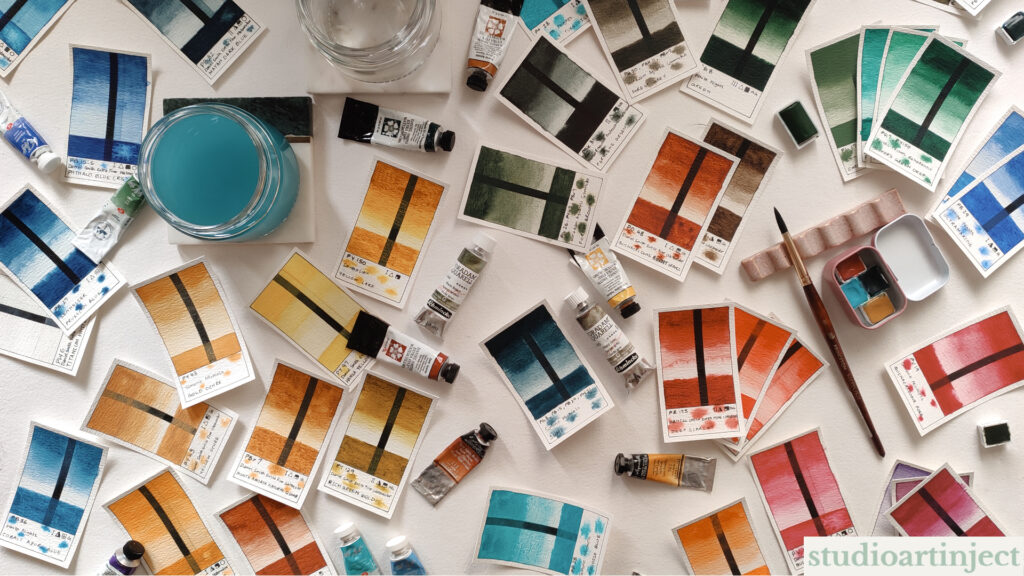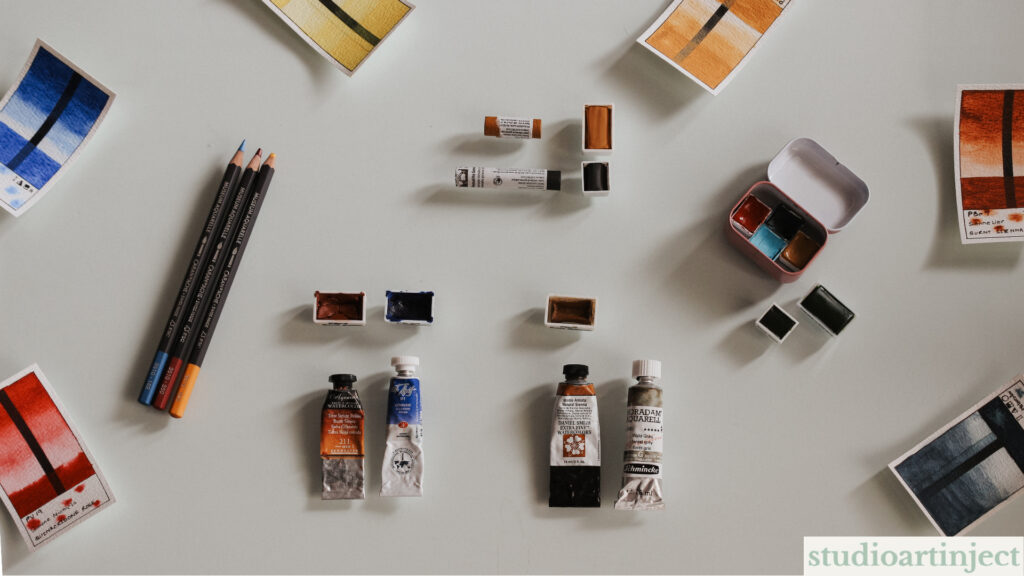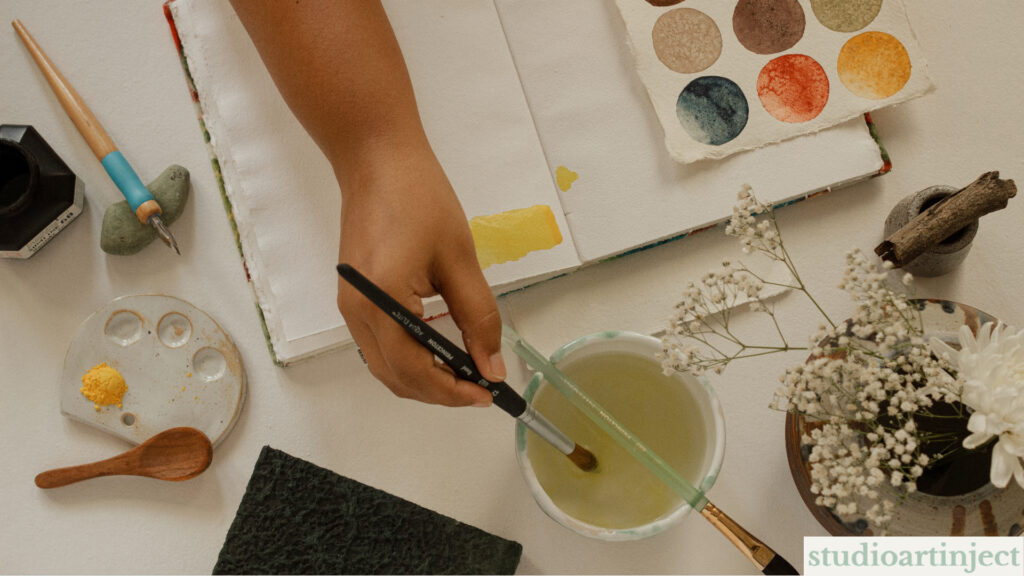In this blog post, I want to introduce you to my favourite medium- Watercolours!
This post is a quick dive into what are watercolours, what are they made of, and the different forms they’re available in.
I’ll also endeavour to bring you clarity around which watercolours are best for you!

What are WATERCOLOUR PAINTS?
Watercolour paint in its most basic form is a combination of pigment (the colour component), gum arabic (the binder), and water (distilled). Other elements like a humectant (honey, glycerin, etc.) and a preservative (e.g. clove oil) also form a part of the paint recipe.
Now, why is it called watercolour? Well, that’s because watercolour paint is activated by adding water, and is applied to the surface by virtue of it being suspended in water. In more technical terms, water is the solvent/ carrier/ vehicle in watercolour paints.
The Different Forms Watercolours are available in
- half & full pan (dried watercolours which need to be activated with water for use),
- tube (fresh watercolour, in its truest form and consistency),
- watercolour stick (moulded in the form of a crayon and can be used as such),
- watercolour pencil (colour pencils with water-soluble pigment lead)
- liquid watercolour (with an ink-like consistency and behaviour).

Which watercolour paints are best for you?
Student-grade:
Student-grade paints are made with the objective of providing watercolour paints at an affordable price for people learning and creating art with a limited budget.
As mentioned before, watercolour paint is primarily a mix of pigment and binder. But student-grade watercolour paint manufacturing companies combine certain additives and a decreased quantity of pigment, to reduce their manufacturing cost and increase their profit despite offering the product at low costs. This, in turn, affects qualities like application, colour strength/ payoff, pigment behaviour, and lightfastness.
Certain brands like Winsor & Newton and Royal Talens Van Gogh provide extremely high-quality student-grade watercolours which can be great substitutes for professional-grade watercolours when you’re on a budget.
Professional-grade:
Professional grade paints are made with the objective of providing paints which stand the test of time. It is made to retain the visual and chemical composition for years to come, from the time of application.
Professional-grade watercolour paint manufacturing companies use their own unique formula of the pigment to gum arabic ratio, with the addition of very small quantities of additives such as honey, glycerine, ox gall, essential oil, etc. This is done to refine certain qualities of the paint like rewet-ability, flow, colour payoff, sheen and preservation. Professional-grade paints allow the true qualities of a pigment, like transparency and granulation, to shine and provide ease of use.
Certain brands like Sennelier and White Knights provide affordable professional-grade watercolour paints, which are otherwise steeply-priced.
Watercolour Paints to Get Started with for Beginners
If you’re on a budget, I would recommend starting with three primaries– ultramarine blue (PB29) [warm blue], quinacridone red/ rose (PV19) [cool red] and hansa yellow medium (PY97)/ lemon yellow [cool yellow], with an optional neutral such as payne’s grey or burnt umber.
As you get used to the colours you have in your palette, you can slowly start adding colours of your choice.

Watercolour is a truly unique medium and is my favourite. I love how this medium forces you to let go of what you cannot control and learn to be at peace with it. It teaches you how to get embrace unpredictability, and even rejoice in it. Painting with watercolours is a truly powerful practice, it facilitates taming the perfectionist in you and prods you to embrace the magic in life.
I hope this post brings you clarity and helps you get started on your magical watercolour journey!
[P.S. This post contains links to supplies that I trust and use, to help you choose the best supplies for yourself. Some of those links are affiliate links, meaning if you make a purchase through those links then I may earn a small commission at no extra cost to you. It is a little something that helps support my art practice and the creation of free resources such as this. Thank you!]